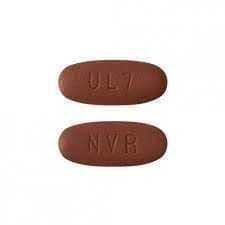What is Piqray?
Piqray is a prescription medicine used in combination with the medicine fulvestrant to treat women who have gone through menopause and men:
- who have hormone receptor (HR)-positive, human epidermal growth factor receptor 2 (HER2)-negative advanced breast cancer or breast cancer that has spread to other parts of the body (metastatic), with an abnormal phosphatidylinositol-3-kinase catalytic subunit alpha (PIK3CA) gene, and
- whose disease has progressed on or after endocrine therapy.
Your healthcare provider will test your cancer for an abnormal “PIK3CA” gene to make sure that Piqray is right for you.
It is not known if Piqray is safe and effective in children.
Who should not take Piqray?
Do not take Piqray if you have had a severe allergic reaction to Piqray or are allergic to any of the ingredients in Piqray.
- See the end of this Patient Information leaflet for a complete list of the ingredients in Piqray.
- See “What are the possible side effects of Piqray?” for signs and symptoms of severe allergic reactions.
What should I tell my healthcare provider before taking Piqray?
Before you take Piqray, tell your healthcare provider about all of your medical conditions, including if you:
- have a history of diabetes
- have a history of skin rash, redness of skin, blistering of the lips, eyes or mouth, or skin peeling
- are pregnant or plan to become pregnant. Piqray can harm your unborn baby.
Females who are able to become pregnant:- Your healthcare provider will check to see if you are pregnant before you start treatment with Piqray.
- You should use effective birth control during treatment with Piqray and for 1 week after the last dose. Talk to your healthcare provider about birth control methods that may be right for you during this time.
- If you become pregnant or think you are pregnant, tell your healthcare provider right away.
Males with female partners who are able to become pregnant should use condoms and effective birth control during treatment with Piqray and for 1 week after the last dose. If your female partner becomes pregnant, tell your healthcare provider right away.
You should also read the Full Prescribing Information of fulvestrant for important pregnancy, contraception, and infertility information. - are breastfeeding or plan to breastfeed. It is not known if Piqray passes into your breast milk. Do not breastfeed during treatment with Piqray and for 1 week after the last dose. You should also read the Full Prescribing Information of fulvestrant for important lactation information.
Tell your healthcare provider about all of the medicines you take, including prescription and over-the-counter medicines, vitamins, and herbal supplements. Piqray and other medicines may affect each other causing side effects. Know the medicines you take. Keep a list of them to show your healthcare provider or pharmacist when you get a new medicine.
How should I take Piqray?
- Take Piqray exactly as your healthcare provider tells you.
- Do not change your dose or stop taking Piqray unless your healthcare provider tells you.
- Take Piqray 1 time each day, at about the same time each day.
- Take Piqray with food.
- Swallow Piqray tablets whole. Do not chew, crush or split the tablets.
- Do not take any Piqray tablets that are broken, cracked, or that look damaged.
- If you miss a dose of Piqray, you may still take it with food up to 9 hours after the time you usually take it. If it has been more than 9 hours after you usually take your dose, skip the dose for that day. The next day, take the dose at your usual time. Do not take 2 doses to make up for a missed dose.
- If you vomit after taking a dose of Piqray, do not take another dose on that day. Take your next dose at your usual time.
- If you take too much Piqray, call your healthcare provider or go to the nearest hospital emergency room right away.
What are the possible side effects of Piqray?
Piqray may cause serious side effects, including:
- Severe allergic reactions. Tell your healthcare provider or get medical help right away if you have trouble breathing, flushing, rash, fever, or fast heart rate during treatment with Piqray.
- Severe skin reactions. Tell your healthcare provider or get medical help right away if you get severe rash or rash that keeps getting worse, reddened skin, flu-like symptoms, blistering of the lips, eyes or mouth, blisters on the skin or skin peeling, with or without fever.
- High blood sugar levels (hyperglycemia). Hyperglycemia is common with Piqray and can be severe. Your healthcare provider will monitor your blood sugar levels before you start and during treatment with Piqray. Your healthcare provider may monitor your blood sugar levels more often if you have a history of Type 2 diabetes. Tell your healthcare provider right away if you develop symptoms of hyperglycemia, including:
- excessive thirst
- dry mouth
- more frequent urination than usual or a higher amount of urine than normal
- increased appetite with weight loss
- Lung problems (pneumonitis). Tell your healthcare provider right away if you develop new or worsening symptoms of lung problems, including:
- shortness of breath or trouble breathing
- cough
- chest pain
- Diarrhea. Diarrhea is common with Piqray and can be severe. Severe diarrhea can lead to the loss of too much body water (dehydration) and kidney problems. If you develop diarrhea during treatment with Piqray, tell your healthcare provider right away. Your healthcare provider may tell you to drink more fluids or take medicines to treat diarrhea.
Your healthcare provider may tell you to decrease your dose, temporarily stop your treatment, or completely stop your treatment with Piqray if you get certain serious side effects.
The most common side effects of Piqray when used with fulvestrant include:
- rash
- nausea
- tiredness and weakness
- decreased appetite
- mouth sores
- vomiting
- weight loss
- hair loss
- changes in certain blood tests
Piqray may affect fertility in males and in females who are able to become pregnant. Talk to your healthcare provider if this is a concern for you. These are not all of the possible side effects of Piqray.
Call your doctor for medical advice about side effects. You may report side effects to FDA at 1-800-FDA-1088.
Piqray Images
General information about the safe and effective use of Piqray
Medicines are sometimes prescribed for purposes other than those listed in a Patient Information guide. Do not use Piqray for a condition for which it was not prescribed. Do not give Piqray to other people, even if they have the same symptoms you have. It may harm them. You can ask your healthcare provider or pharmacist for more information about Piqray that is written for health professionals.
How should I store Piqray?
Store Piqray at room temperature between 68°F to 77°F (20°C to 25°C).
Keep Piqray and all medicines out of the reach of children.
What are the ingredients in Piqray?
Active ingredient: alpelisib
Inactive ingredients: hypromellose, magnesium stearate, mannitol, microcrystalline cellulose, and sodium starch glycolate. The film-coating contains hypromellose, iron oxide black, iron oxide red, macrogol/polyethylene glycol (PEG) 4000, talc, and titanium dioxide.
For more information, go to www.PIQRAY.com or call 1-833-4-PIQRAY (1-833-474-7729).








